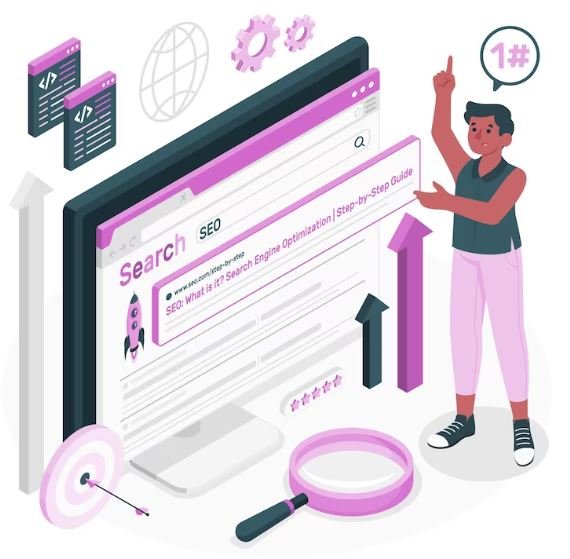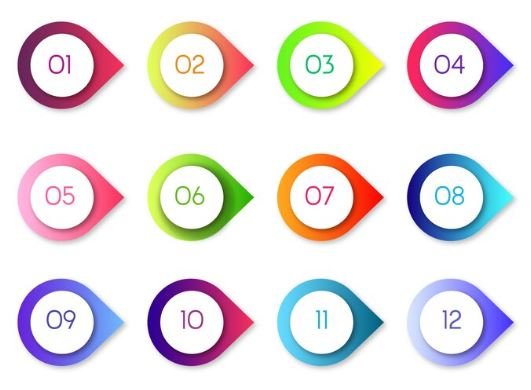Introduction
In the dynamic world of web development, staying at the forefront of design trends is crucial. Whether you’re a seasoned web developer or just starting your journey, the right design tools can make all the difference. In this comprehensive guide, we’ll delve into the realm of web design and development, focusing on the “Best Design Tools for Web Development.” Discover the top-notch resources, strategies, and expert insights to help you create stunning websites and stay ahead in this ever-evolving field. Let’s embark on a journey to unlock the full potential of your web development projects.
Why is Best Design Tools for Web Development?

What Is Keyword Research?
Keyword research is the process of identifying and analyzing the words and phrases that people use when searching online. It helps you understand what your target audience is looking for, enabling you to tailor your content to match their intent.

Why Is Keyword Research Important?
Keyword research is vital for several reasons:
- Relevance: It ensures that your content is relevant to your audience’s needs. Using the right keywords means you’re more likely to attract the right visitors to your website.
- Competition: It helps you assess the competition for specific keywords. You can choose keywords that are less competitive, making it easier to rank higher in search results.
- Content Ideas: It provides insights into the topics your audience is interested in, giving you ideas for creating valuable content.
- Conversion: By using the right keywords, you can improve your website’s conversion rate because your content is aligning with what your audience is searching for.
- Long-Term Strategy: Keyword research should be part of your long-term SEO strategy. Over time, it helps you build authority in your niche and improve your search engine rankings.

How to Conduct Keyword Research
- Brainstorming: Start with a brainstorming session. Write down all the relevant keywords and phrases you think people might use to find content related to your topic. In this case, keywords like “web design software,” “UI/UX design tools,” or “best graphic design apps” would be relevant.
- Use Keyword Research Tools: Utilize keyword research tools like Google Keyword Planner, Ahrefs, SEMrush, or Ubersuggest to identify potential keywords. These tools provide data on search volume, competition, and related keywords.
- Analyze Competitors: Look at what keywords your competitors are targeting. This can provide valuable insights and help you identify gaps in your keyword strategy.
- Long-Tail Keywords: Don’t focus solely on broad keywords; also target long-tail keywords. These are longer, more specific phrases that often have less competition and can attract highly targeted traffic.

Quality Content
Create Informative, Comprehensive Content Google rewards well-researched, informative, and comprehensive content. Aim for a word count of at least 1,500 words, but don’t sacrifice quality for quantity. Include detailed information about the best design tools, their features, and how they benefit web developers. Offer insights, tips, and practical advice.
Why Is Quality Content Important for SEO?
Quality content is the linchpin of SEO for several key reasons:
- Relevance: Search engines, like Google, aim to provide users with the most relevant and valuable content for their search queries. High-quality content ensures that your website is considered a credible source in your niche.
- User Engagement: Quality content keeps visitors engaged, reduces bounce rates, and encourages longer time spent on your website. These user behavior signals are vital for SEO.
- Backlinks: Other websites are more likely to link to and reference your content if it’s well-researched and informative. Backlinks are a crucial factor in SEO.
- Keyword Optimization: Quality content allows for the natural integration of target keywords, like “Best Design Tools for Web Development,” without keyword stuffing, which can hurt your SEO.
- Authority Building: Publishing high-quality content over time helps you establish authority in your niche, increasing your chances of ranking well.

Creating Quality Content
- Research: Before you start creating content, conduct thorough research on your topic. Understand your audience’s needs and pain points, and identify the keywords and phrases they’re searching for. This information will guide your content creation.
- Structure: Organize your content logically with a clear beginning, middle, and end. Use headings and subheadings (H2, H3, etc.) to break up content and make it more scannable.
- Engaging Writing: Write in a style that’s easy to understand. Avoid jargon and complex language unless it’s necessary for your audience. Use storytelling, examples, and relatable anecdotes to engage your readers.
- Originality: Plagiarism can harm your SEO efforts. Ensure your content is unique and not copied from other sources. Use plagiarism checkers to confirm originality.
- Use of Multimedia: Incorporate images, infographics, videos, and other multimedia elements where relevant. Visual aids enhance the user experience and can clarify complex concepts. For instance, you can add images of popular design tools in action to illustrate your points.
- Keyword Integration: Include your focus keyword, “Best Design Tools for Web Development,” naturally throughout your content. This helps search engines understand your content’s relevance to the topic.
- Quality Sources: Cite credible sources to back up your claims and provide authority to your content.

Organize Your Content
Use Headers and Subheadings Divide your content into sections using headers (H2, H3, etc.) and subheadings. This not only makes your content easier to read but also helps search engines understand the structure of your post. Each section can target related keywords.
Why Is Content Organization Important for SEO?
Effective content organization plays a vital role in SEO for the following reasons:
- Readability: A well-organized piece of content is easier to read and comprehend. Users are more likely to stay engaged and read the entire article.
- Keyword Placement: Proper headings and subheadings (H2, H3, etc.) create natural placement opportunities for your focus keyword. In this case, “Best Design Tools for Web Development.”
- Crawlability: Search engine bots crawl your content to understand its structure and topics. Organized content helps search engines index your page correctly.
- User Experience: A clear content hierarchy improves the user experience. Visitors can quickly scan your content to find the information they’re looking for.
- Reduced Bounce Rate: When users find what they need easily, they’re less likely to bounce back to search results, which can positively impact your SEO.
How to Organize Your Content
- Use Headings and Subheadings: Break your content into sections and subsections using headings and subheadings. These not only guide readers but also create semantic structure for search engines. It’s a great place to include images.

- Bullet Points and Lists: Lists and bullet points make information more digestible. Use them when presenting features, benefits, or comparisons of design tools. Images or icons can complement these lists.

Table of Contents: For lengthy articles, consider adding a table of contents at the beginning of the page. Each section can link to its corresponding part in the content. This enhances user navigation and can be visually appealing with icons.
Images and Infographics: Visual content like images and infographics can help illustrate complex concepts. In a section discussing the features of design tools, include images of the tools with callout labels highlighting their key functions.

Internal Linking: Link to related content on your website where relevant. This not only guides users to more of your content but also distributes SEO authority to other pages.

Keyword Optimization
Strategic Placement of Keywords Place your focus keyword naturally throughout the post. Include it in the introduction, headings, and body text. Avoid keyword stuffing; use variations and synonyms to make the content sound natural. Ensure your content is reader-friendly and provides value.
Visual Content: Incorporate High-Quality Images and Videos Visual content not only enhances the user experience but can also improve your SEO. Include screenshots, infographics, or videos that demonstrate the design tools in action. Optimize image alt tags with relevant keywords.

Outbound and Internal Links:
Add Relevant Links Include outbound links to authoritative sources, demonstrating that your content is well-researched. Additionally, incorporate internal links to other relevant posts on your blog, keeping visitors engaged and on your website longer.

Mobile-Friendly Design:
Ensure Responsive Web Design With more users accessing the internet on mobile devices, having a responsive design is crucial for SEO. Google gives preference to mobile-friendly websites. Test your blog post on various devices to ensure it displays correctly.

Page Speed:
Optimize for Fast Loading Page speed is a critical ranking factor. Compress images, use browser caching, and employ a content delivery network (CDN) to ensure your page loads quickly. Google’s PageSpeed Insights can help you identify areas for improvement.

Meta Description:
Craft an Engaging Meta Description Write a compelling meta description that includes your focus keyword. This brief summary appears in search results and can entice users to click on your link.

Social Sharing:
Encourage Social Sharing Include social sharing buttons to encourage readers to share your content. Social signals can indirectly impact your search engine rankings.

Update and Maintain:
Keep Your Content Fresh Search engines prefer up-to-date content. Periodically update your blog post to reflect any changes in the design tools landscape, ensuring it remains a valuable resource.
Promotion:
Share Your Content After publishing, promote your blog post on social media, in relevant online communities, and through email marketing. The more your content is shared and linked to, the better its chances of ranking well.

Conclusion:
In the fast-paced world of web development, the tools you choose can be the difference between mediocrity and excellence. We’ve explored an array of design tools, each catering to specific needs and preferences. From graphic design software that empowers your creative vision to UI/UX tools that enhance the user experience, the options are abundant.
Throughout this guide, we’ve emphasized the importance of quality content, content organization, and effective keyword research, which are fundamental aspects of SEO. By creating valuable, well-structured content and optimizing it for search engines, you can reach a wider audience, establish your online presence, and drive organic traffic to your website.
Remember, SEO is an ongoing endeavor. Stay up-to-date with the latest design tools, trends, and SEO strategies. Continuously refine your content, expand your knowledge, and adapt to the ever-changing digital landscape.
Whether you’re a web development novice or a seasoned pro, harnessing the right design tools and employing SEO best practices can be the key to your success. As you embark on your journey to create exceptional web experiences, keep this guide as your trusted resource. With the best design tools and a strong SEO foundation, the sky’s the limit for your web development endeavors.
Thank you for joining us on this journey, and we wish you the very best in your web development ventures!
Collect books to learn more and become proficient.





